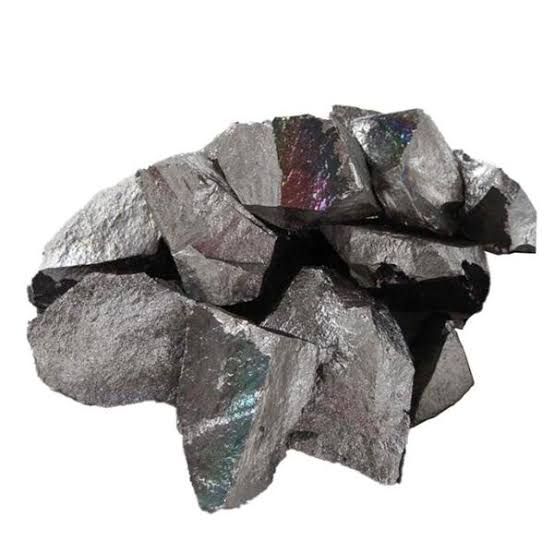
How Ferro-Tungsten is Produced: An In-Depth Look at the Manufacturing Process
Ferro-tungsten, an essential alloy in various industries, undergoes a complex manufacturing process to achieve its desired properties. Understanding the production of ferro-tungsten provides valuable insights into its composition, quality control measures, and the intricate steps involved in its creation.
- Raw Material Extraction and Preparation:
The production of ferro-tungsten begins with the extraction of tungsten-bearing ores, such as scheelite and wolframite. These ores are mined from underground or open pit mines worldwide. Upon extraction, these ores are subjected to grinding and crushing procedures to reach the optimal particle size in preparation for further stages of treatment.
- Concentration and Purification:
The next step involves concentrating the tungsten-bearing minerals through processes like gravity separation, magnetic separation, or flotation. These techniques help separate the tungsten minerals from other impurities present in the ore.
- Roasting:
After concentration, the tungsten concentrate is subjected to roasting. Roasting is a high-temperature process that removes impurities, such as sulfur and carbon, by converting them into volatile compounds. This step improves the purity and quality of the tungsten concentrate.
- Reduction:
The roasted tungsten concentrate is then reduced in a furnace using carbonaceous materials, such as anthracite coal or coke, along with a fluxing agent like limestone. The carbon reacts with tungsten oxide, reducing it to elemental tungsten.
- Alloying:
Once the tungsten is reduced, it is combined with iron sources, typically iron scrap or iron ore, in specific proportions to transform the raw element into ferro-tungsten. Additional alloying elements may also be added to achieve desired alloy compositions. The mixture is then melted in electric arc furnaces or induction furnaces under controlled conditions.
- Refining and Solidification:
The molten ferro-tungsten undergoes refining processes to remove impurities and control the final composition. Techniques such as slag treatment, gas bubbling, or vacuum refining are employed to achieve the desired product quality. The refined molten alloy is then cast into molds or cooled to form solid ferro-tungsten ingots.
- Crushing and Sizing:
The solidified ferro-tungsten ingots are crushed into smaller pieces and sorted into specific size ranges. This process ensures uniformity and facilitates further processing and utilization.
- Quality Control:
Throughout the manufacturing process, strict quality control measures are implemented to ensure the final product meets the required specifications. Various tests and analyses, including chemical composition analysis, density measurements, and mechanical property evaluations, are conducted to assess the quality and performance of the ferro-tungsten.
- Packaging and Distribution:
Once the ferro-tungsten is deemed satisfactory in terms of quality, it is packaged and prepared for distribution to end users. The packaged material is carefully labelled, ensuring proper identification and traceability.
The production of ferro-tungsten involves a combination of mining, concentration, reduction, alloying, and refining processes. Each step is crucial in achieving the desired composition, purity, and quality of the final product. The utilization of advanced technologies, stringent quality control measures, and a skilled workforce contributes to the efficient and reliable production of this master alloy.
As a versatile alloy, ferro-tungsten finds applications in various industries, including automotive, aerospace, electrical, and tool manufacturing. Its unique properties, such as high melting point, excellent hardness, and wear resistance, make it a valuable component in the production of high-performance tools, electrical contacts, and other critical applications globally.
Understanding the intricate manufacturing process of ferro-tungsten provides valuable insights into its significance and the effort involved in its production. By continuously improving and optimizing the manufacturing processes, the industry aims to enhance efficiency, reduce environmental impact and meet the growing global demand for this material.
A Key Ferrotungsten Producer
Tungsten Metals Group Ltd. is a prominent player in the ferro-tungsten industry and plays a crucial role in meeting the global demand for this essential alloy as the largest producer outside Russia and China. As an Australian-based company, TMG operates a cutting-edge electric arc furnace at its state-of-the-art manufacturing facility located in Vietnam. With an impressive output capability of 16 tonnes per day, the company utilizes advanced production techniques to ensure the production of high-quality ferro-tungsten. TMG is committed to responsible mining practices and is also a proud member of the Responsible Mining Initiative, undergoing regular audits to ensure compliance with rigorous environmental and ethical requirements. Additionally, their Vietnam factory operates in accordance with Australian safety and environmental standards, prioritizing the well-being of its workforce and minimizing its environmental footprint.
It’s important to note that the production of ferro-tungsten is not limited to individual companies or regions. Collaboration and partnerships across the global supply chain play a significant role in ensuring a stable and sustainable supply of this essential alloy. Manufacturers, suppliers, and end-users work together to exchange knowledge, share best practices, and drive innovation in the production and utilization of ferro-tungsten.
Ultimately, the manufacturing process of ferro-tungsten involves a series of intricate steps, from raw material extraction to alloying, refining, and quality control. Through advanced technologies, stringent quality standards, and continuous improvement initiatives, the industry strives to produce high-quality ferro-tungsten that meets the diverse needs of various industries.
As a vital alloy, ferro-tungsten enables the development of innovative products and technologies, contributing to advancements in sectors such as automotive, aerospace, electronics, and renewable energy. Its remarkable properties,make it an indispensable material in applications where performance and reliability are paramount.
By understanding the manufacturing process and the significance of ferro-tungsten, we can appreciate its critical role in our modern society and the efforts undertaken to ensure its sustainable production.







